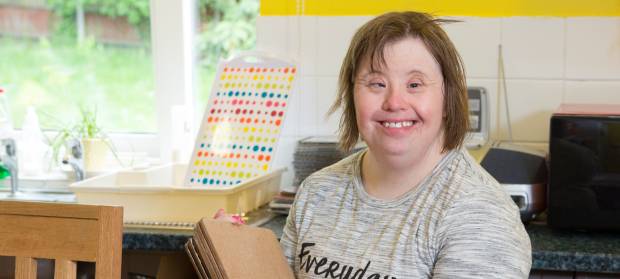People with a
learning disability
 A learning disability is to do with the way someone's brain works. It makes it harder for someone to learn, understand or do things.
should have a clear say in where and with whom they want to live. Less than 50 years ago, people with a learning disability were locked away and kept a secret from the rest of society.
A learning disability is to do with the way someone's brain works. It makes it harder for someone to learn, understand or do things.
should have a clear say in where and with whom they want to live. Less than 50 years ago, people with a learning disability were locked away and kept a secret from the rest of society.
Many lived in large institutions – in settings resembling old hospital wards or prison wings. Much has changed since then and people now have a right to live independently in the
community
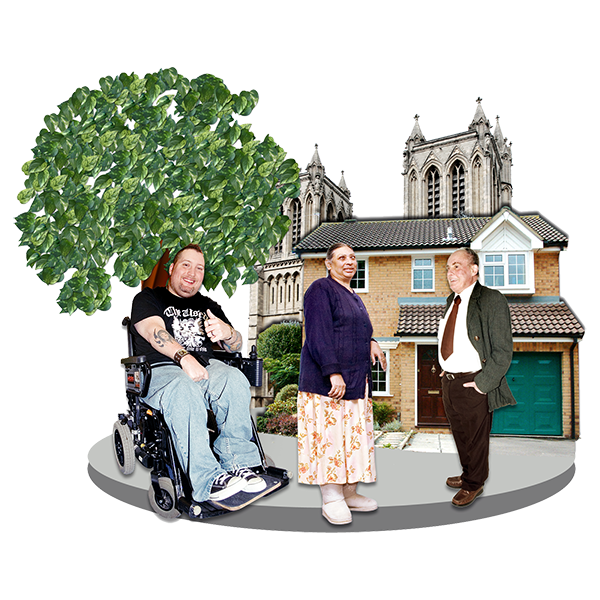 A community is the people and places in an area.
, and to be supported where needed.
A community is the people and places in an area.
, and to be supported where needed.
There are a range of housing options available to people with a learning disability, ranging from residential care to supported housing and ‘shared lives’. Which one is most suitable to an individual all depends on the particular needs and wishes of the person in question.
Frequently asked questions (FAQ)
We've created the following FAQ to try and answer some of your questions about housing.
Click the questions below to reveal each answer.
What is residential care?
A residential
care home
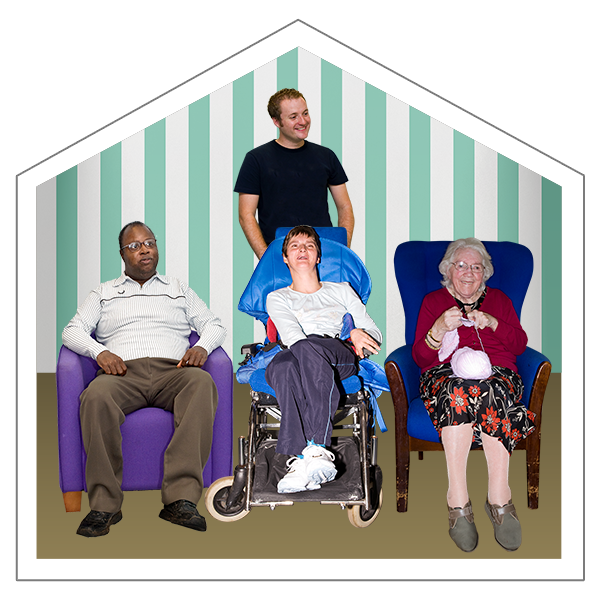 A care home is a place where people who need support live. There are staff there all the time.
provides accommodation together with personal care. A person with a learning disability will have a room in a building shared with a number of other people. Twenty-four-hour care will be provided on site and meals will be included. Most residential care homes nowadays house between 4-8 people.
A care home is a place where people who need support live. There are staff there all the time.
provides accommodation together with personal care. A person with a learning disability will have a room in a building shared with a number of other people. Twenty-four-hour care will be provided on site and meals will be included. Most residential care homes nowadays house between 4-8 people.
Residential care homes are owned and managed by public, private sector or charitable bodies. They are registered with the Care Quality Commission (CQC) under the Care Standards Act 2000 and are regularly inspected. Providers of registered care homes since April 2015 also need to publicly provide information about their CQC rating. Staff are required to be trained to a certain level and staffing ratios are laid down.
You can read all of the Care Quality Commission reports for Mencap’s services here.
How do I access residential care?
The Adult Social Care department of the local authority undertakes an
assessment
 An assessment is a way of finding out what help a person needs. When you have an assessment, you might have to go to a meeting or fill in a form.
of needs under the Care Act 2014 and places the individual in a suitable home when there is a vacancy. If placed by a local authority following an assessment in line with the national eligibility criteria, the authority will normally fund the place with the home provider. Better run homes will make some effort to ensure the person being placed is compatible with existing residents and vice versa, however there is always some pressure to fill empty rooms.
An assessment is a way of finding out what help a person needs. When you have an assessment, you might have to go to a meeting or fill in a form.
of needs under the Care Act 2014 and places the individual in a suitable home when there is a vacancy. If placed by a local authority following an assessment in line with the national eligibility criteria, the authority will normally fund the place with the home provider. Better run homes will make some effort to ensure the person being placed is compatible with existing residents and vice versa, however there is always some pressure to fill empty rooms.
Self-funders or those with insurance settlements may find a place themselves.
What are the pros and cons of residential care?
The pros of residential care is that it:
- is regulated by CQC which gives some guarantee of quality in both building and services
- has meals provided and included in price
- includes activities that may be arranged on or off site
- has other people to befriend and share social activities with
- is an inclusive fee for accommodation, care and support and all household expenses – clear and simple
- can be purpose designed for disabled people and may include additional facilities such as a sensory room
- is seen as a secure environment.
The cons of residential care is that:
- it is an institutional setting; individuals will often have to do things at the same time as other residents
- you may have limited amount of your own spending money (personal expenses allowance/ DLA or PIP mobility component)
- residents have little choice over who they live with
- some residents have limited living space and private space
- care provider and housing provider are one and the same - a good care provider may not be good at property management and maintenance and vice versa
- there are limits personal choice and control, little say over who live with, who staff are, life style
- there is no security of tenure
- there is limited choice over who is the care provider.
What is supported housing?
There are different forms of supported housing; people can either live by themselves with support or share an ordinary or purpose built home with a small number of other disabled people. Each person normally has their own bedroom.
The rest of the property is communal space and normally this will include at least a lounge, kitchen and dining area. There may be additional facilities like a sensory room, laundry, staff sleep-in room and some schemes will for example have ‘en suite’ bathrooms rather than a shared bathroom.
There will be an established and funded level of staff support, from visiting to 24-hour presence. Staff may or may not also live in the group home. Some supported housing provision is based purely on support with no personal care required.
People have their own individual tenancies, and if they don’t work, Housing Benefit will normally cover the costs of their rent. There may also be other funding arrangements in place. Tenants will also have access to a range of other benefits and will be able to choose how they spend them.
How do I access supported housing?
Supported housing is a specialist housing provision for people with a range of needs, including people with a learning disability.
Anyone with a learning disability wanting to live in supported housing will normally have been assessed by their local social care department as needing this form of housing arrangement.
Local authorities will often have some preferred providers of supported housing, but individuals can also contact providers directly to see whether they can help.
What are the pros and cons of supported housing?
The pros of supported housing are that:
- it is more personal, less institutional
- residents have some say over who provides care, as care provider is not the same as the landlord
- residents also have a say as to how the building is run and who is offered a room when a room becomes available in the home
- rules are made by the residents, not the provider
- building and services can be designed to meet individual needs
- tenants have their own tenancy and with that some security of tenure and a certain level of control over their property
- tenants have access to a range of benefits and can spend the money as they wish (as long as they pay their rent)
The cons of supported housing is that there is an absence of individual inspections and monitoring of service by Care Quality Commission.
What is home ownership?
There are a number of ways people with a learning disability can also own a home. For example, people can enter a shared ownership agreement, either with investment from the family, help to buy or buy a home together with a number of other people.
They can also buy a home outright, should they have an inheritance or other money to do this with.
There are different types of home ownership, which are explained in the questions and answers below.
What is shared ownership?
Shared ownership normally means that rather than buying 100% of a home, the person buying the home buys a percentage of it. This can range from 25% to 75% of the home. The other part of the home is then normally owned by a housing association/ registered provider or other people. This is a tried and tested route for people with a learning disability to access home ownership.
If you buy part of a home, you are still legally considered the owner and have the benefits, as well as responsibilities, that come with that. However, there are ways of making sure that particularly the responsibilities of homeownership are minimised for disabled people to ensure that they are not suddenly faced with high maintenance costs. For example, the lease can be drawn so it places repair and maintenance responsibilities on the landlord.
Shared ownership is also known as ‘part-buy’, ‘part-rent’. The part that you don’t own, and which is owned by the housing association, is rented to the individual who owns the other part of the property. In the case of a disabled person, the part that is rented will, provided the individual qualifies, be eligible for Housing Benefit.
In most cases, shared-ownership properties are developed and sold by housing associations. There are also a number of shared ownership programmes promoted and financed by the Homes and Communities Agency (HCA). The most relevant programme for people with a learning disability is the ‘Home Ownership for People with a Learning Disability’ programme. You may also be able to buy an existing shared-ownership property. There are also a small number of housing associations that develop and have shared ownership homes outside the HCA rules.
To find out more try contacting for example, Advance Housing or Progress Care, who are the leading organisations in this area.
What are the pros and cons of shared ownership?
The pros of shared ownership are that it:
- offers all of the advantages of ownership for a disabled person at a fraction of the cost
- may be a route for a family who cannot afford to buy a property outright for a relative, but who nevertheless would like them to have all the advantages and security of owning a home
- can be combined with Support for Mortgage Interest to also make owning a suitable house possible without any family contribution
- provides security of tenure.
The cons of shared ownership are that:
- it is more complex than outright ownership
- leases may have restrictions, for example on sub-letting
- as with buying any property there are legal,
survey
 A survey is when someone asks you to answer some questions.
and other expenses of buying to be met
A survey is when someone asks you to answer some questions.
and other expenses of buying to be met - support for Mortgage Interest is not a guaranteed source of income and can be subject to change. It is important that further advice is taken from your benefit advisor and/or financial advisor.
- if the lease is not drawn up properly, repair and maintenance cost may fall on the individual, which may be difficult for them to manage, both financially or physically.
What is shared ownership with family investment?
A person may have inherited a lump sum and wants to put this into buying a place to live in.
This can be done via the shared ownership route.
For example, if a bungalow they have seen is £210,000 and the person has just inherited £70,000, they could buy a 30% share of the property, with the other part of the property being owned by a housing association.
What is shared ownership with a mortgage?
A person with a learning disability can also buy a home with a mortgage. If you get a mortgage you have to pay a bit of it back each month, but you may be able to get money to help with this if you claim: Income Support, Incapacity Benefit or
Employment
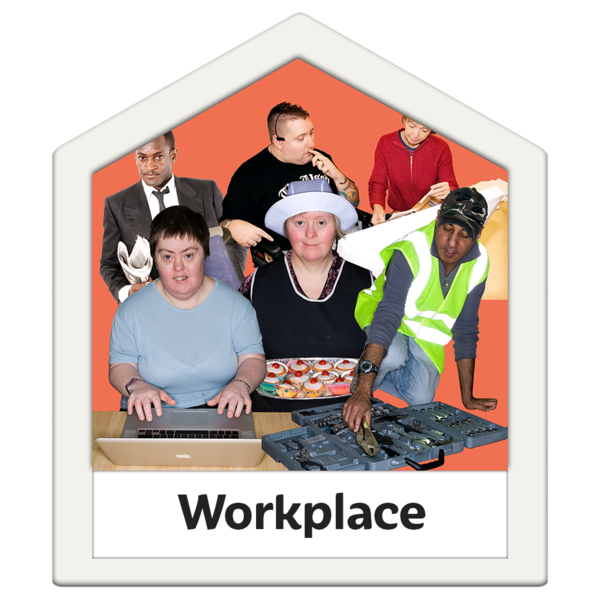 Employment means having a job.
Support Allowance (Support Group), as well as
Disability Living Allowance
Employment means having a job.
Support Allowance (Support Group), as well as
Disability Living Allowance
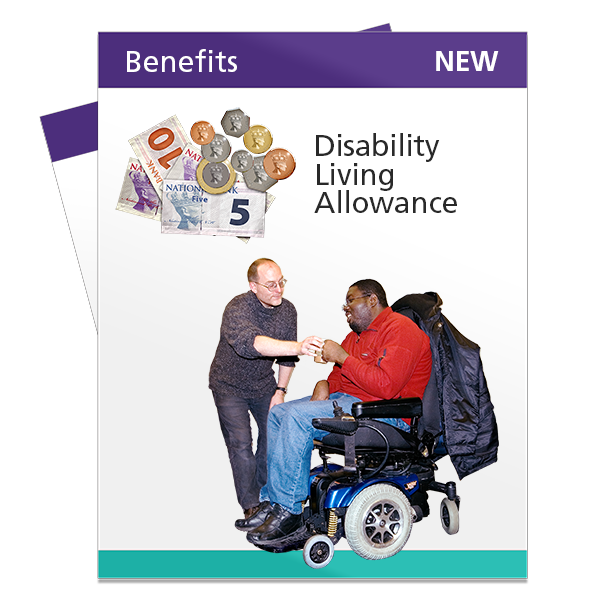 Disability Living Allowance (DLA) is the name of a benefit that some people with a disability get. The money is to pay for extra help you might need to look after yourself and to get around. Disability Living Allowance is being replaced by a benefit called
Personal Independence Payment
Disability Living Allowance (DLA) is the name of a benefit that some people with a disability get. The money is to pay for extra help you might need to look after yourself and to get around. Disability Living Allowance is being replaced by a benefit called
Personal Independence Payment
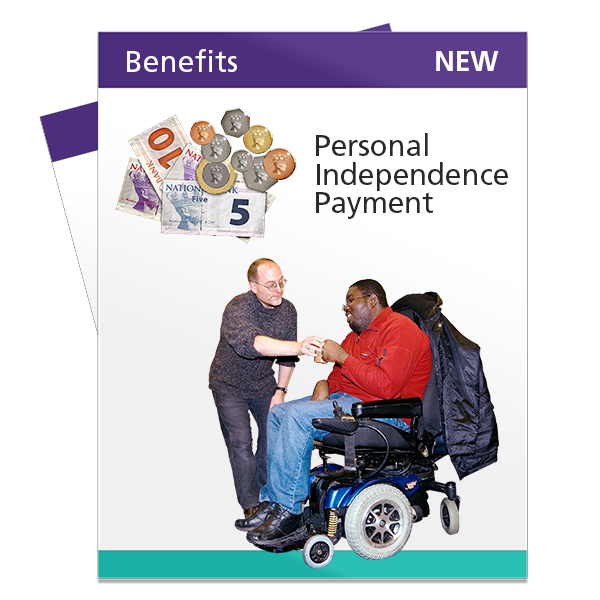 Personal
Independence
Personal
Independence
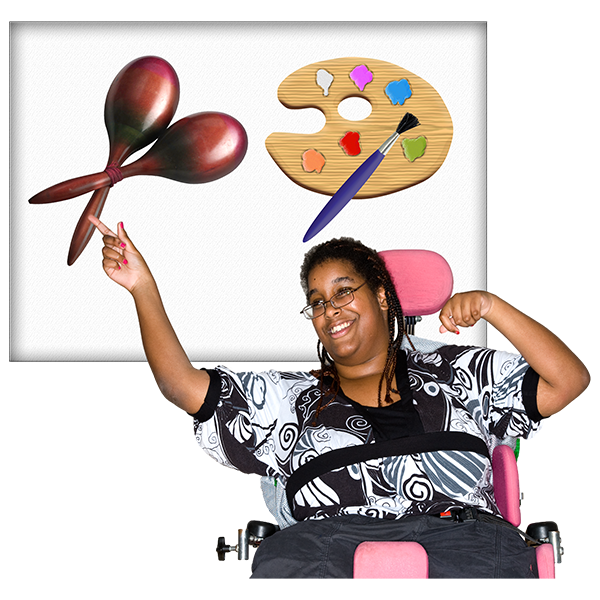 Independence means doing things on your own. Making your own choices.
Payment (PIP) is the name of a benefit that some people with a disability or health condition get. The money is to pay for extra help you might need to look after yourself and to get around. Some people who used to get Disability Living Allowance (DLA) now get PIP instead.
(PIP).
or Personal Independence Payments, High or Middle Rate Care or Daily Living Component.
Independence means doing things on your own. Making your own choices.
Payment (PIP) is the name of a benefit that some people with a disability or health condition get. The money is to pay for extra help you might need to look after yourself and to get around. Some people who used to get Disability Living Allowance (DLA) now get PIP instead.
(PIP).
or Personal Independence Payments, High or Middle Rate Care or Daily Living Component.
If you claim these benefits you may be able to claim an additional benefit called Support for Mortgage Interest (SMI). This pays most, but not all, of the interest on a mortgage of up to £200,000 for you. You will need to pay for the usual solicitor and conveyancing and mortgage broker costs.
The mortgage is eventually paid off using the money you get when the house is sold because you don’t want to live there anymore or you have died. If you have to sell the house for less than you bought it for the Housing Association covers the loss, so you will always have enough money to pay off the mortgage.
The Housing Association may be able to get a grant from the Homes and Communities Agency called the HOLD Grant. They will also put some of their own money in as well. It is important to remember that the person buying and living in a shared ownership property will need to pay rent on the part that they do not own. However, in the same way as when the person owns a part of the property outright, the person buying a home via this route will be able to claim Housing Benefit on this, unless they have more than £16,000 in savings or have paid work for more than 16 hours a week.
For more information on how to buy a home via this route, please contact MySafeHome.
What is shared home-ownership with other people?
It may also be possible to get together with a group of other people to jointly buy a home for a small group of people with a learning disability. Up to 4 people, normally people go down the joint ownership route. If it is for more than 4 people, those wanting to buy the property can think about forming a company. People can also set up an independent, not-for-profit company.
There is no one way to do this, it all depends on the parties involved. It may be that people own the same shares in a company model or individuals buy a self-contained house or flat as part of a new development. Rent can be charged on the property to pay for maintenance and repair, repaying loans or housing management.
What is shared lives?
Shared lives is a scheme whereby a person with a learning disability is matched with a host family and lives in their home as part of their family.
The host family provides the individual with support and care. Normally each scheme will have a person that matches families with individuals who need support.
How do I access a shared lives scheme?
Shared Lives Plus is a network for shared lives schemes providers, which might be a good starting point.
What are the pros and cons of shared lives schemes?
The pros of the shared lives scheme are:
- the individual is part of a family and part of a community
- the people who support them know them well
- people will be matched to a family.
The cons of the shared lives scheme are:
- there is no security of tenure.
- there may be rules that the person doesn’t like.
- you might not like the host family.
What is extra-care and sheltered housing?
Extra-care and sheltered housing is normally for older people, although sometimes younger people can live in it too. Normally, sheltered housing is used to describe schemes that of a number of bungalows or flat, clustered in an area.
They normally have an alarm system and a visiting or on-site warden.
Extra-care housing will normally have more communal facilities in addition to this, such as perhaps an activity room. Individual flats can be rented or bought via the shared ownership route.
What are the pros and cons of extra-care and sheltered housing?
The pros of extra-care and sheltered housing are:
- the flats are
accessible
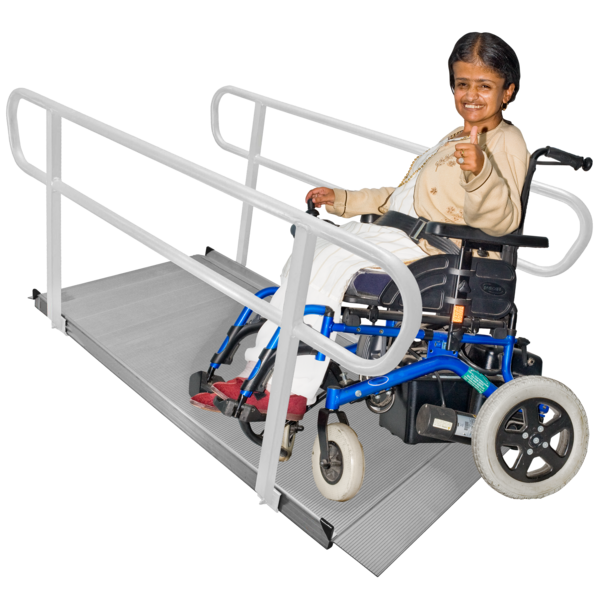 Accessible means something is easy for people to use or join in with. For example: Accessible writing means the writing is easy to read and understand.
and meet the needs of someone who is older or frail
Accessible means something is easy for people to use or join in with. For example: Accessible writing means the writing is easy to read and understand.
and meet the needs of someone who is older or frail - there is always support nearby, including an emergency alarm
- you can have any extra support you need
- your tenancy is more secure - if you rent the property you can live there for a long time. You might also be able to buy the property
- there are things to do and you do not have to travel for the things you need
- if you start to need more support, you can usually get this without having to move
- it can work well for people with profound and multiple learning disabilities.
The cons of extra-care and sheltered housing are:
- the homes are not necessarily designed for someone with a learning disability
- some people might feel cut off from the community
- younger people in particular may feel isolated from their peers.
What is renting a home via the mainstream market?
People with a learning disability can also rent what is called a ‘general needs’ home on the open market either from a local authority, housing association or from a private landlord. In order to be considered for social housing or local authority housing, individuals have to be on the local authority housing waiting list. There is great demand for this kind of housing. General needs housing is probably most appropriate for people with milder learning disabilities.
Some learning disability providers also have schemes where they lease from a private landlord and then let out the property to people with a learning disability.
What are the pros and cons of renting a home via the mainstream market?
The pros of renting a home via the mainstream market are:
- there is more mainstream housing available and the private rented sector can be accessed by people with a learning disability directly
- there is at least some security of tenure, although in the private rented sector this is limited.
The cons of renting a home via the mainstream market are:
- housing benefit in the private rented sector (and possibly in the social rented sector going forward) for general needs is more restricted
- many private landlords will not allow adaptations to be made to the property they are renting out
- private landlords can be reluctant to rent to people on Housing Benefit.
Where do I start exploring the options in more detail?
What steps you need to take, will all depend on what kind of housing option you think is the best for the person looking for a home. However, here are some tips as to how to get started and what to think about.
Think about what the person wants and needs by asking:
- what are the persons’ reasons for wanting to move?
- how soon do they want to move?
- what does the person want? Do they want to live with someone or alone, somewhere quiet or in a buzzling town centre? Do they need to be near transport links?
- what care and support does the person need? Do they need a care assessment?
- what money does the person have available? Do they have a lump sum to spend?
Find out about housing options there are in the area by:
- talking to the local housing department – can they help?
- asking if they know any housing associations or charities that may be able to help
- finding out about the local housing allocation scheme. Could they access a home through that route?
- seeing if there is anyone the person could partner with
- looking into a local housing advise scheme for people with a learning disability
Make sure that:
- you link with other parents and social services to identify potential people to share with
- social services are involved and supportive, should the individual require care and support
- the person is on the council’s housing waiting list as well as the Housing Association waiting list in the area.
How to get the support you need
Phone or email our Learning Disability Helpline team for
guidance
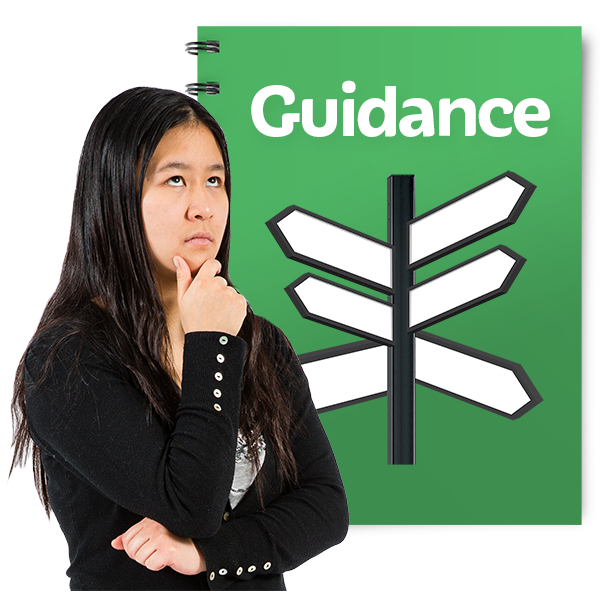 Guidance means being given clear instructions to be able to do something well.
and information about what support we can offer you.
Guidance means being given clear instructions to be able to do something well.
and information about what support we can offer you.
Or why not take a look at our online community? This is a place for parents and family carers of people with a learning disability to share experiences, advice and support.
